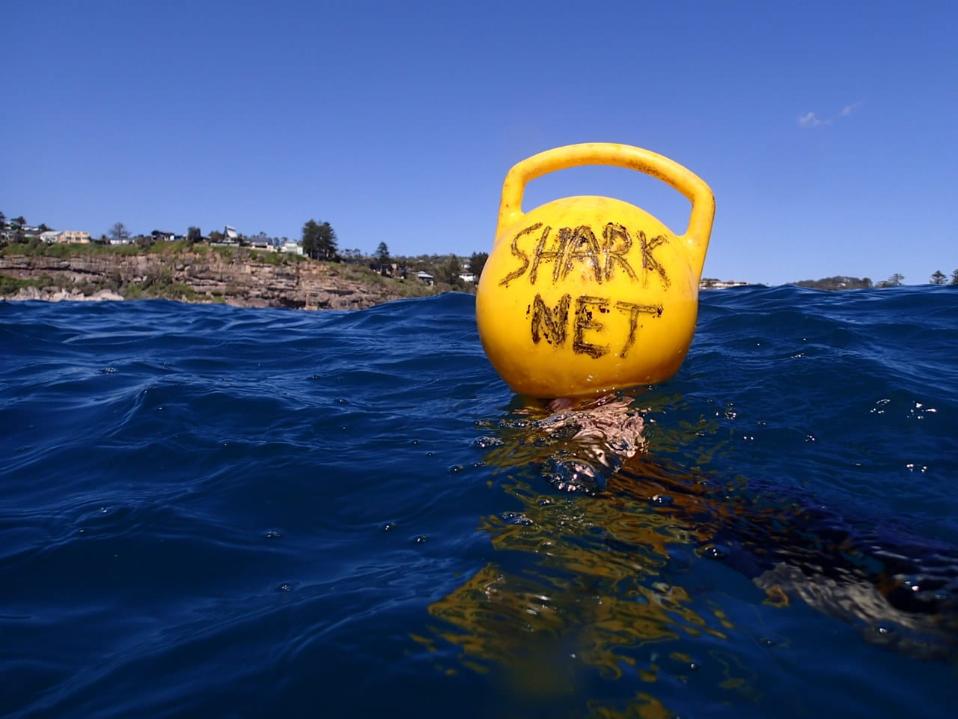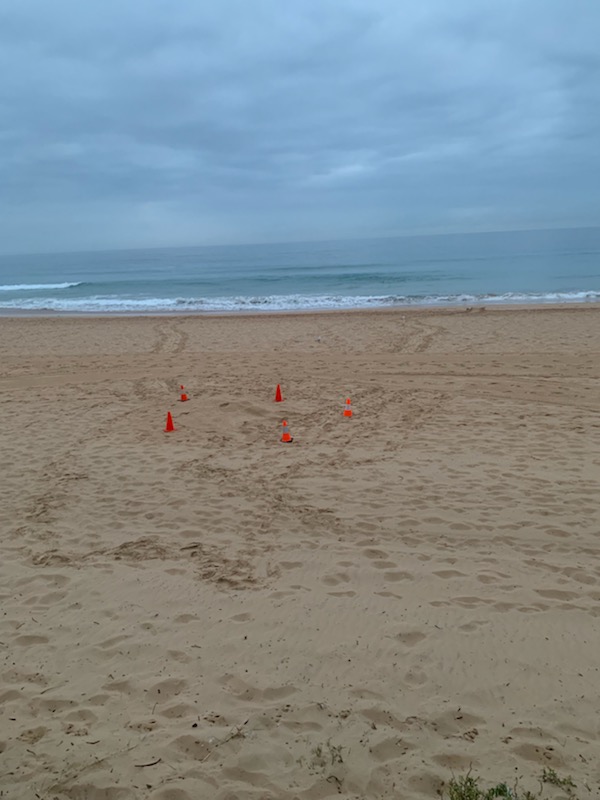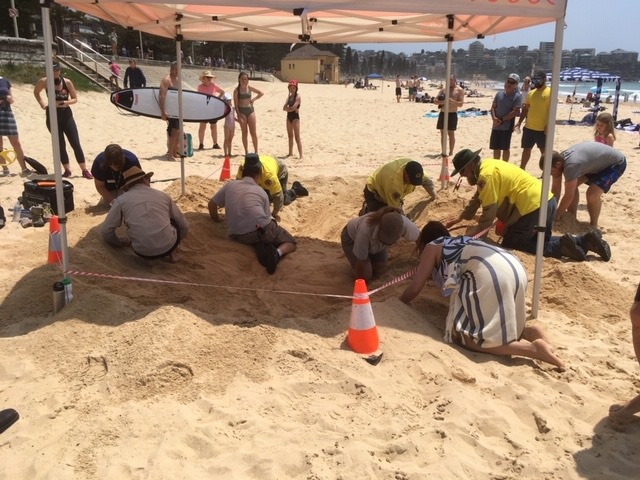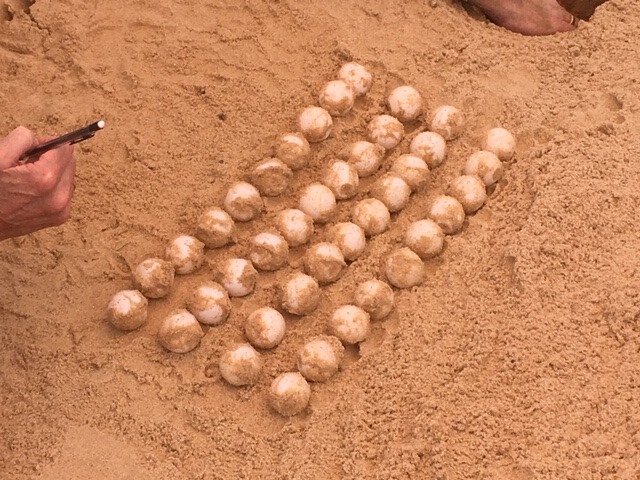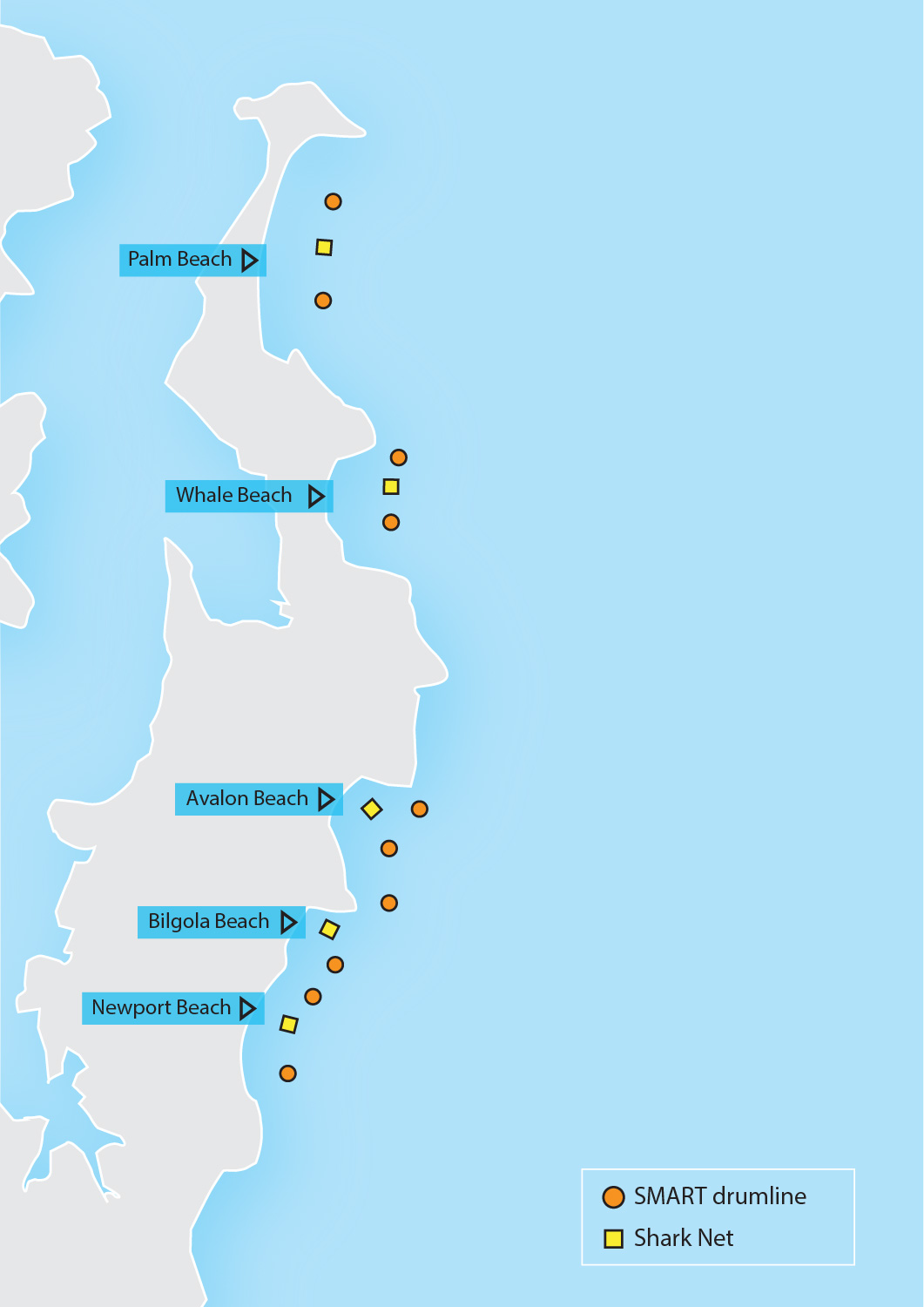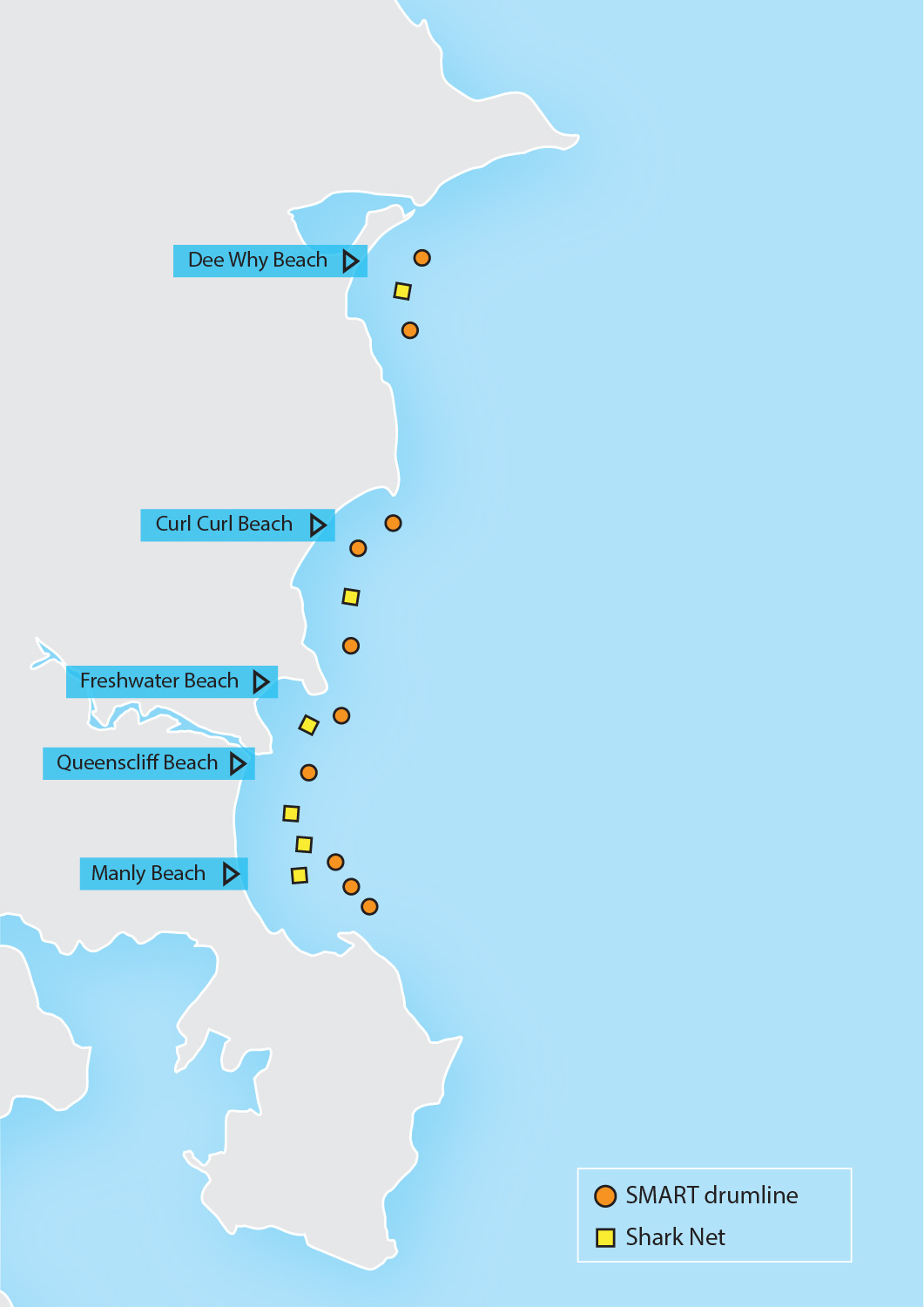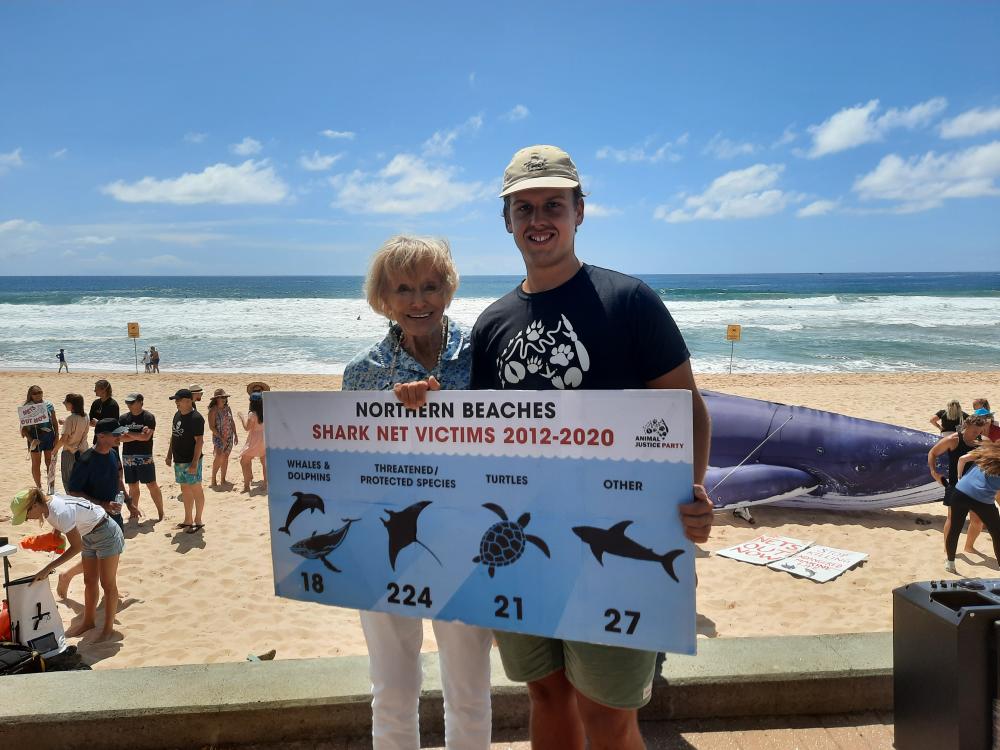On August 1st 2024, the NSW Government announced they would shorten the shark net season by one month because of the toll on endangered turtles.
That announcement has been followed by another this week about how many turtles were saved after a rapid response team involving the NSW Government rescued a record number of eggs from North Coast beaches in the lead up to Ex-Tropical Cyclone Alfred (see report below).
The government also made statements that they would include councils and local communities in the decision-making process regarding the continuation of shark nets on their beaches.
In April 2021 our local Council called on the NSW government to remove shark nets on beaches in the Council area and replace them with a combination of modern and effective alternative shark mitigation strategies that maintain or improve swimmer safety and reduce unwanted by-catch of non-target species.
Council made the call in response to Department of Primary Industries – Fisheries (DPI Fisheries) request for input from stakeholders on their preferred shark mitigation measures, following a five-year project considering the benefits and impacts of a range of mitigation measures.
A number of residents addressed Council’s April 2021 meeting in support of shark net removal, including surfing champion Layne Beachley.
Then A/Mayor Candy Bingham said Council considered both the need to maintain or improve swimmer safety as well as the negative impacts on non-target marine species in reaching their decision.
“The effectiveness of shark nets has been questioned by many, yet their impact on other marine species is devastating,” Cr Bingham said.
“We have an aquatic reserve in Manly where turtles and rays are regularly seen by snorkelers, and up and down the beaches dolphins surf the waves alongside local board riders.
“The research conducted by DPI Fisheries found that 90% of marine species caught in nets were non-target species and that sharks can in fact swim over, under and around the nets anyhow.
“If the evidence is that there are other just as, or more, effective ways to mitigate shark risk, such as drone and helicopter surveillance, listening stations and deterrent devices, then we owe it to those non-target species to remove the nets. We will be providing that feedback through this consultation process and look forward to the government implementing effective shark mitigation measures while protecting other important marine species.”
On March 3 2022 a unanimous resolution was passed by Local Government NSW that requested that the NSW Government phases out the use of shark nets. The historic motion also asked that the shark nets are replaced with a combination of alternatives that protect swimmers more effectively and do not harm marine wildlife.
In January 2025 Newcastle City Council withdrew support for shark nets at its six local beaches, joining six other NSW councils — Wollongong, Sutherland, Waverley, Northern Beaches, Central Coast, and Lake Macquarie — in rejecting their use.
On February 25 2025 Randwick Council voted 'no' to the continued use of shark nets, meaning none of the eight councils with shark nets support their continued use.
The Shark Management Program for the coming summer, released on August 1st 2024, included a suite of new measures to be trialled, which will increase protections for marine life while shark nets remain in use, the government stated.
The government's Shark Smart website states:
'The NSW Government’s Shark Meshing (Bather Protection) Program includes 51 beaches between Newcastle and Wollongong. In accordance with the 2024 Management Plan for the program, the nets will be removed on 31 March.'
These beaches are netted by contractors using specially designed meshing nets to reduce the chances of interactions with White, Tiger and Bull Sharks, collectively referred to as ‘target sharks’ of shark mitigation in NSW.
The nets do not create a total barrier between people and sharks. They are designed to intercept target sharks near meshed beaches to reduce the chance of an interaction.
While the nets cannot provide a guarantee that an interaction will never happen, they have reportedly reduced the rate of interactions.
Shark nets are fitted with acoustic warning devices, such as dolphin pingers and whale alarms to deter and minimise the risk of entanglement to those marine mammals.
According to the Australian Shark Incident Database (ASID, formerly known as the Australian Shark Attack File – October 2024), 35 unprovoked shark interactions have reportedly occurred at netted beaches of the SMP, 17 of which involved White Sharks, a target species for the program. Other interactions at meshed beaches were with Wobbegong Sharks (12), unknown species of sharks (3), and unidentified Whaler Sharks (3).
The 2024/25 Program includes a suite of new measures to be trialled, which will increase protections for marine life whilst shark nets remain in use, including:
- Removing shark nets one month earlier, on 31 March 2025, to respond to increased turtle activity in April (from 1989 - 2024 nets came out on 30 April).
- Increasing the frequency of net inspections by the net contractors during February and March from every third day to every second day.
- Using SLS NSW drones to inspect the nets during March on the days the net Contractors aren’t inspecting, effectively providing daily net inspections.
- Trial of lights on nets to deter turtles and prevent their entanglement (February-March 2025).
The reminder of the shark net removals come as sustained warm waters and the state government's listening stations, in place at North Narrabeen, Palm Beach and North Steyne, transmitting to the SharkSmart app and supporting webpages, monitor tagged sharks and residents report an increased presence of these.
See: It's a 'Bit Sharky' out there: 5 Tagged Bull Sharks Pinged at North Narrabeen on Same Day - Bull Shark spotted at Bayview + some historical insights into Sharks in the estuary and along our beaches (March 10-16 2025 Issue 640 - Week 3)
''‘Shark nets do not work the way many people assume they do. They are not a barrier to the open ocean but are merely 150m long and six metres high and are anchored in 12m of water a few hundred metres from shore.
Logic will tell you that any shark can swim over, under or around a net, particularly at a beach like Maroubra which stretches for about a kilometre,’ said Lawrence Chlebeck, a marine biologist and shark expert with Humane World for Animals Australia (formerly Humane Society International Australia), on Monday March 24 2025
To prove the point, almost half of the sharks caught in the shark nets are caught on the beach side of the net, HWAA states
The Shark Meshing (Bather Protection) Program 2023-24 Annual Performance Report, released August 1st 2024, recorded a total of 255 marine animals were caught in the SMP during the 2023/24 meshing season, comprised of 15 target sharks and 240 non-target animals. Ninety-two animals (36%) were released alive.
Those listed under 'Sydney North'- our region, and which now omitted for the first time where, specifically, each animals died - records 44 non-target species were caught in local nets:
- White Shark 1
- Bronze Whaler 2
- Dusky Whaler 2
- Smooth Hammerhead Shark 10 - 56 of the 57 caught in all nets were found dead. 26 were caught in the nets at Central Coast north and 17 at Central Coast south.
- Greynurse Shark 3. 6 of the 14 caught died. 157 of these species have been caught in the nets dating from the 2013/14 program onwards according to the report (Threatened species entanglements for 2013/14 to 2023/24 - page 30.)
- Southern Eagle Ray 4
- Australian Cownose Ray 15 - the highest amount caught in any of the nets
- Indo-Pacific Bottlenose Dolphin - 3 - 4 out of he 5 caught in all nets were found dead
- Green Turtle - 1. 8 of the 13 caught died.
- Leatherback Turtle - 2. 5 of the 11 caught overall were found dead.
- Longtail Tuna - 1
The Shark Meshing (Bather Protection) Program 2022/23 Annual Performance Report records 34 non-target species were caught in shark nets in our area during the reporting period - of that number 21 died before they could be released. None of these caught locally were target shark species.
Two of these were deaths of Loggerhead turtles, one at Mona Vale and one at Narrabeen, a species listed as Endangered in NSW and at Australian Commonwealth Government level. Loggerhead turtles nest from late October, reaching a peak in late December and finish nesting in late February or early March.
Mona Vale's net also led to the drowning death of a Green Turtle, listed as Vulnerable in NSW and at Australian Commonwealth Government level. In recent years species of turtles nesting locally - Green Turtle eggs were found at North Steyne in January 2020 and more recently the Listed as Endangered Loggerhead Turtle eggs were found at Shelly Beach on the Central Coast in January 2023.
“If we truly want to put people’s safety first, then we need to stop putting our trust in 100-year-old technology and start relying on modern safety measures” he said.
Shark nets were introduced to Sydney beaches in 1937.
The nets, not to be confused with netted enclosures at harbour beaches, are located off 51 beaches between Newcastle and Wollongong. In the most recent figures, from 2023, only 15 targeted sharks—white, tiger, and bull—were caught in the nets. The remaining 240 animals included turtles, rays, dolphins and harmless sharks.
Nets on Sydney beaches caught zero target sharks during the 22/23 shark net season and only three the following (23/24) season. During that time, those same nets caught 124 rays, turtles, dolphins and smaller sharks, essentially ringing the dinner bell for larger animals, HWA states
“There is no point in just feeling safe, we actually need to be safe. Shark nets don’t keep us safe. No one wants to see a harmless ray, dolphin or a turtle killed in a net,’ Chlebeck said, ‘but unfortunately it is happening most days. We also know that vulnerable species like the grey nurse shark are regularly entangled and even Sydney’s little penguins.
HWA Australia has also stated images from within the NSW Shark Meshing Program (SMP) and obtained by them under Freedom of Information, show that large sharks have fed on animals caught in the nets, proving a long-held theory that dead and dying animals in the nets attract sharks.
'The images are consistent with a 2020 report from James Cook University for the Queensland Department of Agriculture and Fisheries which outlines several guidelines to mitigate shark bite.'
One of those guidelines is to, ‘not swim or surf near shark nets.’
‘This is dangerously ironic for a public safety measure,’ said Lawrence Chlebeck
‘Shark nets are intended to capture target sharks, but their inherent design flaw is that they mostly catch other marine animals,’ he said.
‘As sharks are attracted to struggling prey, a shark net is akin to ringing a dinner bell for any shark in the area, and those nets are placed right near swimmers and surfers with the assumption that they keep us safe.’
The sharks targeted by the SMP are migratory species—white, tiger, and bull. They travel vast distances around our coastline, and are attracted to activity, scent, and when they sense animals in distress.
‘This is a huge price to pay for a misguided assumption of safety. There is no point in just feeling safe, we actually need to be safe. Shark nets don’t keep us safe. They kill indiscriminately and offer nothing more than a false sense of security,’ Mr. Chlebeck said.
‘Let’s stop arguing with emotion and let’s start looking at the science. Our safety depends on it, and so do the lives of innocent marine life.’
